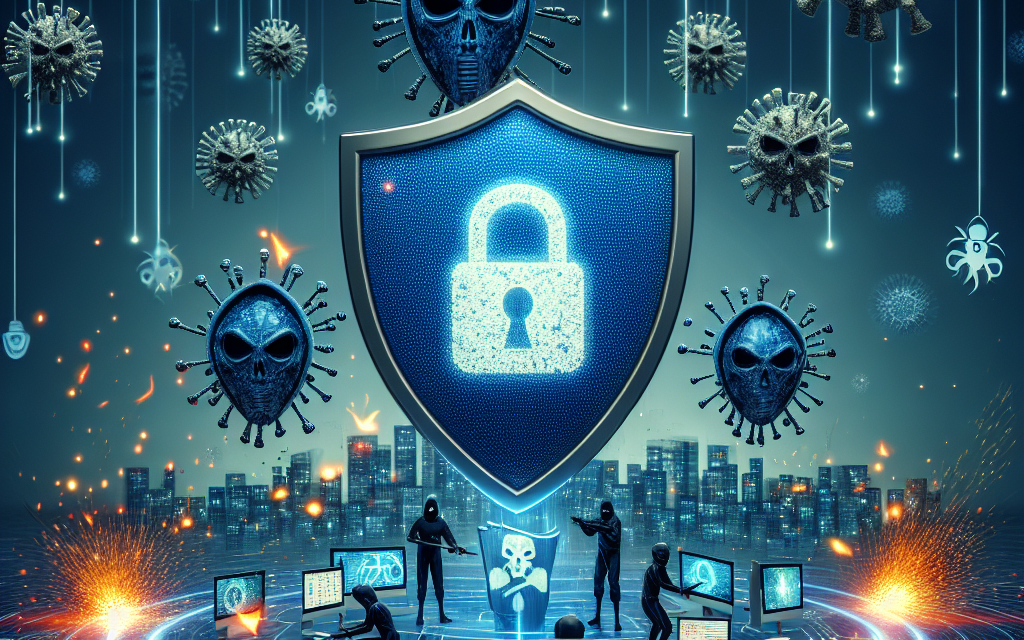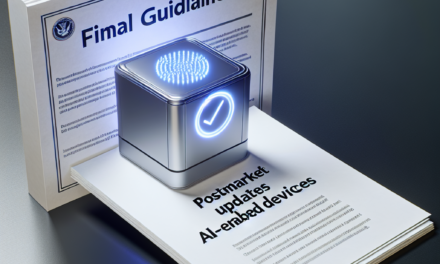DaVita Faces Ransomware Attack Crisis
In an era where digital transformation is reshaping industries, healthcare organizations are increasingly becoming targets for cybercriminals. One of the most significant incidents in recent times is the ransomware attack on DaVita Inc., a leading provider of kidney care and dialysis services. This article delves into the details of the ransomware attack crisis faced by DaVita, exploring its implications, the response strategies employed, and the broader context of cybersecurity in healthcare.
Understanding Ransomware: A Growing Threat
Ransomware is a type of malicious software that encrypts a victim’s files, rendering them inaccessible until a ransom is paid. The healthcare sector has become a prime target for such attacks due to the sensitive nature of the data it handles and the critical services it provides. According to a report by Cybersecurity Ventures, ransomware attacks are expected to cost the world $265 billion by 2031, highlighting the urgency for organizations to bolster their cybersecurity measures.
Ransomware attacks can have devastating effects on healthcare organizations, including:
- Operational Disruption: Ransomware can halt operations, delaying patient care and disrupting essential services.
- Financial Loss: Organizations may face significant financial losses due to ransom payments, recovery costs, and potential legal liabilities.
- Reputation Damage: Trust is paramount in healthcare; a ransomware attack can severely damage an organization’s reputation.
- Data Breach Risks: Sensitive patient data may be exposed, leading to privacy violations and regulatory penalties.
As ransomware attacks become more sophisticated, healthcare organizations like DaVita must adopt comprehensive cybersecurity strategies to protect their systems and patient data.
The DaVita Ransomware Attack: Timeline and Impact
In early 2023, DaVita Inc. experienced a significant ransomware attack that compromised its operations and patient data. The attack was part of a broader trend of increasing cyber threats targeting healthcare providers. The timeline of the attack reveals the severity and implications of the incident:
- Initial Breach: The attack began with a phishing email that tricked an employee into providing access to the network.
- Encryption of Data: Once inside, the attackers deployed ransomware that encrypted critical files, including patient records and operational data.
- Ransom Demand: The attackers demanded a ransom payment in cryptocurrency, threatening to release sensitive data if their demands were not met.
- Operational Disruption: DaVita faced significant operational challenges, with many clinics unable to access patient records, leading to delays in treatment.
- Public Disclosure: DaVita publicly disclosed the attack, informing patients and stakeholders about the potential risks to their data.
The impact of the ransomware attack on DaVita was profound. The organization had to implement emergency protocols to restore operations, which included:
- Data Recovery Efforts: IT teams worked around the clock to restore encrypted data from backups.
- Patient Communication: DaVita communicated with patients about the potential risks to their data and the steps being taken to mitigate them.
- Collaboration with Law Enforcement: DaVita engaged with law enforcement agencies to investigate the attack and identify the perpetrators.
The attack not only disrupted DaVita’s operations but also raised concerns about the security of patient data in the healthcare sector. The incident served as a wake-up call for many organizations, emphasizing the need for robust cybersecurity measures.
Response Strategies: How DaVita Managed the Crisis
In the aftermath of the ransomware attack, DaVita implemented a series of response strategies to manage the crisis effectively. These strategies focused on immediate recovery efforts, long-term cybersecurity enhancements, and stakeholder communication.
Some of the key response strategies included:
- Incident Response Team Activation: DaVita activated its incident response team, comprising IT professionals, legal experts, and communication specialists, to coordinate the response efforts.
- Data Recovery and Restoration: The organization prioritized data recovery, utilizing backups to restore critical systems and minimize downtime.
- Enhanced Cybersecurity Measures: DaVita invested in advanced cybersecurity technologies, including intrusion detection systems and endpoint protection solutions, to prevent future attacks.
- Employee Training Programs: Recognizing that human error often leads to breaches, DaVita implemented comprehensive training programs to educate employees about cybersecurity best practices.
- Regular Security Audits: The organization committed to conducting regular security audits and vulnerability assessments to identify and address potential weaknesses in its systems.
These response strategies not only helped DaVita recover from the immediate crisis but also laid the groundwork for a more resilient cybersecurity posture. By prioritizing cybersecurity and employee training, DaVita aimed to reduce the risk of future attacks and protect patient data.
The Role of Cybersecurity in Healthcare: Lessons Learned
The ransomware attack on DaVita highlighted several critical lessons about the importance of cybersecurity in the healthcare sector. As cyber threats continue to evolve, healthcare organizations must adapt their strategies to safeguard sensitive data and maintain operational continuity.
Key lessons learned from the DaVita incident include:
- Proactive Cybersecurity Measures: Organizations must adopt a proactive approach to cybersecurity, including regular risk assessments and the implementation of advanced security technologies.
- Employee Awareness and Training: Human error is a significant factor in many cyber incidents. Ongoing training and awareness programs can empower employees to recognize and respond to potential threats.
- Incident Response Planning: Having a well-defined incident response plan is crucial for minimizing the impact of a cyber attack. Organizations should regularly test and update their plans to ensure effectiveness.
- Collaboration with Law Enforcement: Engaging with law enforcement agencies can provide valuable support during a cyber crisis, including assistance with investigations and threat intelligence.
- Patient Communication: Transparent communication with patients and stakeholders is essential during a crisis. Organizations should inform affected individuals about potential risks and the steps being taken to address them.
By learning from the DaVita ransomware attack, healthcare organizations can strengthen their cybersecurity frameworks and better protect themselves against future threats.
The Future of Cybersecurity in Healthcare: Trends and Predictions
The landscape of cybersecurity in healthcare is rapidly evolving, driven by technological advancements and the increasing sophistication of cyber threats. As organizations like DaVita navigate these challenges, several trends and predictions are emerging that will shape the future of cybersecurity in the healthcare sector.
Key trends and predictions include:
- Increased Investment in Cybersecurity: Healthcare organizations are expected to allocate more resources to cybersecurity, recognizing it as a critical component of operational resilience.
- Adoption of Artificial Intelligence: AI and machine learning technologies will play a significant role in enhancing threat detection and response capabilities, allowing organizations to identify and mitigate risks more effectively.
- Regulatory Changes: As cyber threats continue to rise, regulatory bodies may introduce stricter compliance requirements for healthcare organizations, emphasizing the need for robust cybersecurity measures.
- Focus on Supply Chain Security: With the increasing interconnectedness of healthcare systems, organizations will need to prioritize supply chain security to protect against vulnerabilities introduced by third-party vendors.
- Telehealth Security Enhancements: The rise of telehealth services during the COVID-19 pandemic has created new cybersecurity challenges. Organizations will need to implement security measures to protect patient data in virtual care settings.
As the healthcare sector continues to evolve, organizations must remain vigilant and proactive in their cybersecurity efforts. By embracing emerging technologies and adapting to changing threats, healthcare providers can better protect their patients and maintain trust in their services.
Conclusion: Navigating the Cybersecurity Landscape
The ransomware attack on DaVita Inc. serves as a stark reminder of the vulnerabilities that healthcare organizations face in an increasingly digital world. As cyber threats continue to evolve, it is imperative for organizations to adopt comprehensive cybersecurity strategies that encompass technology, training, and incident response planning.
Key takeaways from the DaVita ransomware attack crisis include:
- The importance of proactive cybersecurity measures to prevent attacks.
- The need for ongoing employee training and awareness programs to mitigate human error.
- The value of having a well-defined incident response plan to minimize the impact of cyber incidents.
- The significance of transparent communication with patients and stakeholders during a crisis.
- The necessity of adapting to emerging trends and technologies in cybersecurity to stay ahead of threats.
As the healthcare sector continues to navigate the complexities of cybersecurity, organizations must prioritize the protection of patient data and operational integrity. By learning from incidents like the DaVita ransomware attack, healthcare providers can build a more resilient future, ensuring that they are equipped to face the challenges of an ever-evolving cyber landscape.





